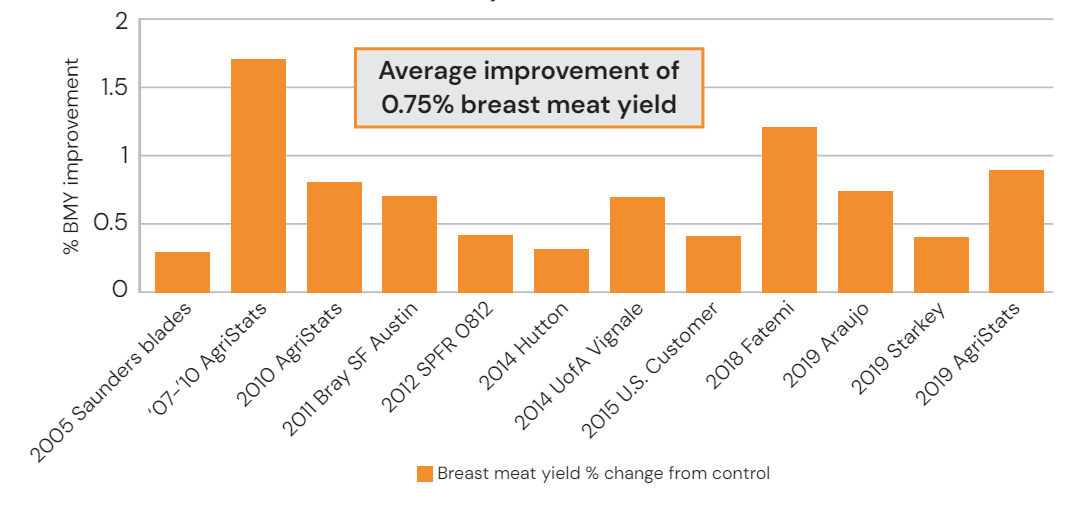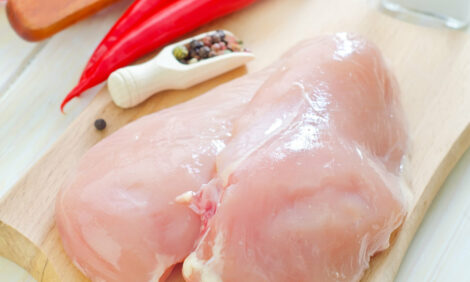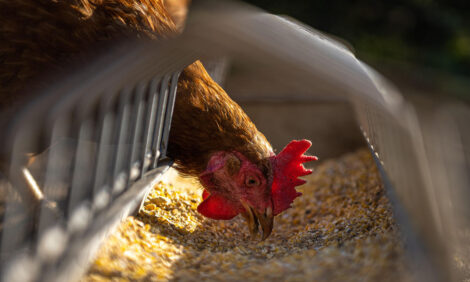



25-OH D3 effect on muscle development in broilers
25-OH D3 (Hy•D) has demonstrated it is essential for optimal poultry productionVitamin D metabolism
Vitamins are essential for optimal animal health. Vitamin D, the “sunshine vitamin” has been recognized and researched since the 1910s and its role in human and animal health is well established. To understand the full impact of vitamin D, research has more recently focused on its metabolites 25-OH D3 (25-hydroxycholecalciferol, the circulating form) and 1,25-diOHD3 (1,25-dihydroxycholecalciferol, the hormonal form). Since most poultry are raised indoors and do not have access to sunlight, vitamin D must be supplied in the diet. As the inclusion of vitamin D3 has become a standard in diet formulation, 25-OH D3 has also gained popularity as a common ingredient in poultry diets. The benefits are being further realized as an important ingredient for animal production and health.
To attain the circulating metabolite, 25-OH D3, vitamin D3 must be hydroxylated in the liver and again in the kidneys to become 1,25-diOHD3. There is a benefit to including 25-OH D3 directly in the diet as the liver hydroxylation process is no longer required and can be by-passed. This is beneficial for poultry as it allows for sufficient circulating levels of 25-OH D3 even when under stressful conditions. If vitamin D3 were the only form included in the diet, liver stress, heat stress, metabolic insufficiencies (young and old birds), and reduced enzyme production would greatly impact the conversion of D3 to 25-OH D3.[1,2] Vitamin D is best known for its role in calcium and phosphorus metabolism in relation to skeletal development, maintenance, and production parameters such as eggshell quality. There are two other critical roles vitamin D plays in the body, more specifically the role the metabolites play. The kidney is not the only place vitamin D metabolism occurs.[3] Metabolism of 25-OH D3 to 1,25-diOHD3 occurs in many tissues involved in paracrine and autocrine function such as skin, cells of the immune system, parathyroid gland, intestinal epithelium, and muscle cells. This discovery led to more research exploring the unrealized benefits of dietary 25-OH D3.

Hy•D®: A commercially available source of pure 25-OH D3, the circulating form of vitamin D.
- Vitamin D3 (as well as 25-OH D3 provided in the diet) must be absorbed in the intestinal tract. Absorption of 25-OH D3 is more efficient than vitamin D3, which can be limited especially in young birds that have inadequate lipase and bile salt levels.
- Once absorbed, vitamin D3 must be hydroxylated to 25-OH D3 in the liver. Feeding 25-OH D3 in the form of Hy•D bypasses the liver, resulting in a faster, more efficient increase in circulating levels of 25-OH D3.
- Finally, 25-OH D3 must go to the kidneys for an additional hydroxylation step to be converted to the active, hormonal form, 1,25-diOHD3. This final activation step is strictly regulated in the animal.
25-OH D3 and muscle development
Skeletal muscle contains 1-α hydroxylase, the enzyme required to convert 25-OH D3 to 1,25-diOHD3 and vitamin D receptor (VDR) which indicates vitamin D’s role in growth of muscle tissue.[4] Research has shown 25-OH D3 (in the form of Hy•D®) increases VDR expression, satellite cell activity, and the expression of pro-myogenic factors, all of which are involved in muscle cell growth. [5,6]
When 25-OH D3 (Hy•D) is included in the diet, VDR increases the expression of mTOR in muscle cells. mTOR is a protein kinase that regulates cell growth, cell proliferation, cell motility, cell survival, protein synthesis and transcription. mTOR also activates S6K-1, therefore the higher the activity of mTOR the higher the activity of S6K-1. S6K-1 is directly associated with protein synthesis.[5,6,7]

Control diet: Vit D 2760 IU/kg – 42 d
VD3: Vit D 5520 IU/kg - 42 d
Hy•D-21: Hy•D 42 – 21 d Control 22-42
Hy•D-42: Control + Hy•D (2760 IU): 5529 IU/kg - 42 d.
Phosphorylation indicates gene activation
Birds fed Hy•D for 0-21 days and 0-42 days showed higher expression of phospho mTOR, phospho S6K-1 and VDR than birds fed vitamin D3. Hy•D activates the nuclear VDR which in turn enhances the activation of mTOR and S6K-1.
The findings of these cellular and molecular broiler trials showcase the mechanism of action leading to an increase in broiler muscle growth and muscle cell proliferation ultimately leading to an increase in breast meat yield. An impact which has also been observed in field data collected by broiler producers and by industry sourced data. It has been reported that broilers fed 25-OH D3 (Hy•D) compared to broilers fed vitamin D3 alone had an average improvement of 0.75% breast meat yield across 12 trials.
25-OH D3 breast meat yield % improvement
Hy•D vs. D3 only U.S. Data
In research and in practical conditions, 25-OH D3 (Hy•D) has demonstrated it is essential for optimal poultry production, having positive impacts on bone strength, growth, performance, immune status, muscle development, and improving breast meat yield (BMY).
Breast meat yield % change Hy•D vs. vitamin D3

| References | ||||
|---|---|---|---|---|
| 1 Saunders-Blades JL, Korver DR. | ||||
| (2014) | The effect of maternal vitamin D source on broiler hatching egg quality, hatchability, and progeny bone mineral density and performance.. J. Appl. Poult. Res. | 23:773-783. | ||
| 2 Khan, S. H., R. Shahid, A. A. Mian, R. Sardar, and M. A. Anjum. | ||||
| (2010) | Effect of the level of cholecalciferol supplementation of broiler diets on the performance and tibial dyschondroplasia. J. Anim. Physiol. Anim. Nutr. (Berl). | 94:584–593. | ||
| 3 Shanmugasundaram, R., and R. K. Selvaraj. | ||||
| (2012) | Vitamin D-1alpha-hydroxylase and vitamin D-24-hydroxylase mRNA studies in chickens.. Poult. Sci. | 91:1819–1824. | ||
| 4 Bikle DD. | ||||
| (2000) | Vitamin D: Production, Metabolism and Mechanisms of Action. | [Updated 2021 Dec 31]. In: Feingold KR, Anawalt B, Blackman MR, et al., editors. Endotext [Internet]. South Dartmouth (MA): MDText.com, Inc.; 2000-. | ||
| 5 Vignale K, Greene ES, Caldas JV, England J, Boonsinchai N, Sodsee P, et al. | ||||
| (2015) | 25-hydroxyvitamin D3 enhances muscle development in broiler via activation of mechanistic target of rapamycin (mTOR) pathway.. Journal of Nutrition | 145:(5) 855–63. | ||
| 6 Hutton KC, Vaughn MA, Litta G, Turner BJ, Starkey JD. | ||||
| (2014) | Effect of vitamin D status improvement with 25-hydroxycholecalciferol on skeletal muscle growth characteristics and satellite cell activity in broiler chickens.. Journal of Animal Science | 92:3291–9. | ||
| 7 Berri C, Praud C, Godet E, Duclos MJ. | ||||
| (2013) | Effect of dietary 25-hydroxycholecalciferol on muscle tissue and primary cell culture properties in broiler chicken.. World’s Poultry Science Journa | 69 | Proceedings of Egg Meat Symposia, Bergamo September 15th–19th 2013. |








